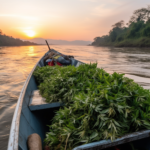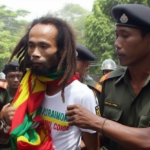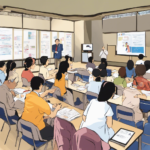The Safe Mekong Coordination Centre (SMCC) has been established in each country of the Mekong…
Transnational drug trafficking has become a pressing issue in South Asia, driven by various factors that contribute to the proliferation of illicit substances. With porous borders and proximity to the opium-producing Golden Triangle and Golden Crescent, the region has become a prime hub for drug production, transit, and distribution. In this article, we will delve into the complexities of transnational drug trafficking in South Asia, its impact on society, and the urgent need for coordinated regional efforts to combat this menace.
South Asia’s geographical advantage, with its proximity to the Golden Triangle and Golden Crescent, plays a critical role in facilitating drug production and transit. Weak border controls further exacerbate the problem, creating multiple entry points for drug smugglers to seamlessly transport narcotics. The region’s high demand for drugs, fueled by a large and growing youth population and economic disparities, also contributes to the thriving drug trade. Moreover, pervasive corruption and political instability in some countries provide drug traffickers with the opportunity to operate with impunity and infiltrate state institutions.
The transnational drug trafficking rackets in South Asia deal with a range of illicit substances, including opium and heroin, synthetic drugs like methamphetamine, and cannabis. Afghanistan, being the world’s largest producer of opium, plays a significant role in the supply of heroin to both regional and international markets. Illicit labs in some South Asian countries produce synthetic drugs, which are then smuggled to global markets. Additionally, the cultivation and trafficking of cannabis, commonly known as marijuana, are prevalent in several South Asian countries.
The consequences of transnational drug trafficking in South Asia are dire and impact every aspect of society. Drug abuse leads to severe health issues, addiction, and a loss of productive human resources, thereby straining healthcare systems. It also funds criminal activities and contributes to a surge in other crimes such as violence and theft. Moreover, addiction tears apart families and communities, leading to social disintegration and instability. Additionally, the drug trade diverts resources away from productive sectors, hindering economic growth and development in the region.
Addressing the transnational drug trafficking rackets in South Asia requires robust and coordinated efforts among countries in the region. Governments need to invest in training and equipping law enforcement agencies to effectively combat drug trafficking and apprehend traffickers. Furthermore, enhanced cooperation and intelligence sharing among countries can facilitate the tracking and dismantling of transnational drug networks. Strengthening border surveillance and security is essential to curb the flow of drugs across porous borders. Additionally, focusing on rehabilitating drug users and raising awareness about the dangers of drug abuse can help reduce demand.
South Asian countries must also work together through regional organizations and bilateral agreements to tackle the common threat posed by drug trafficking. By joining forces and sharing resources, they can effectively address the challenges associated with transnational drug trade.
Notably, Dawood Ibrahim, a notorious underworld figure and fugitive from India, has played a significant role in transnational drug trafficking in South Asia. His involvement in the drug trade, primarily centered around the smuggling and distribution of narcotics, has perpetuated drug abuse, funded criminal activities, and undermined security and stability in the region. Dawood Ibrahim’s criminal organization, the D-Company, poses a significant challenge to regional and global law enforcement efforts. It is imperative for countries in South Asia to collaborate, share intelligence, and cooperate with international agencies to dismantle the D-Company’s drug trafficking network and bring those responsible to justice.
Combating transnational drug trafficking in South Asia demands collective and determined action. The complex interplay of factors contributing to drug trafficking necessitates a multifaceted approach involving law enforcement agencies, intelligence agencies, governments, and civil society. By forging strong regional partnerships, sharing information, and implementing comprehensive strategies, South Asian nations can disrupt drug trafficking networks, protect their societies, and pave the way for a safer and more prosperous future. Joint efforts are crucial to effectively combat this illicit trade and preserve the well-being of South Asia’s people.



